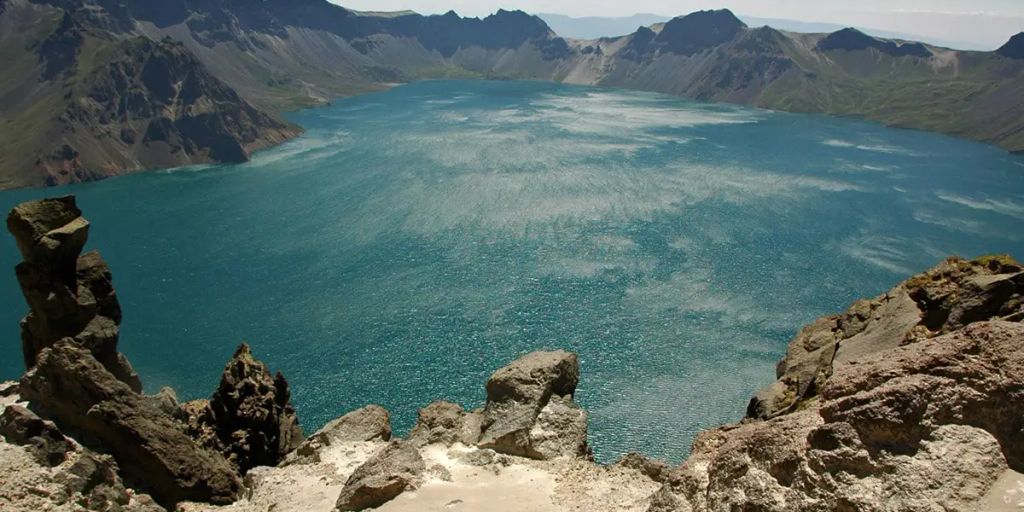Korea Chronicles: Tales from the Road Less Traveled takes readers on an unforgettable journey through the rich tapestry of Korean history, culture, and landscapes. From the cinematic beauty of ‘The Road to Sampo’ to the poignant life story of Hwang, and from hidden natural gems to the bustling filming locations of popular K-Dramas, this article explores the multifaceted allure of Korea. Whether you’re a history buff, a nature lover, or a K-Drama enthusiast, this guide offers a comprehensive look at the road less traveled in Korea.
Key Takeaways
- ‘The Road to Sampo’ offers a cinematic journey through Korea’s winter landscapes and transient friendships.
- Hwang’s life story is a compelling tale of exile, imprisonment, and literary contributions.
- Discover Korea’s hidden gems like Taejongdae, Yeongdo Lighthouse, and Mangbuseok.
- Explore the significant shift from an agrarian to an industrial society in Korea and its impact on the working class.
- Visit iconic K-Drama filming locations across Seoul, Gyeonggi-do, and Gongju.
The Cinematic Journey of ‘The Road to Sampo’

Winter Landscapes and Silent Beauty
The story of ‘The Road to Sampo’ is set in a beautiful winter landscape. The icy winds, the snow, and the silent surroundings add to the cinematic feel of the tale. This setting provides a brief respite from the grind of daily life, making it a memorable journey.
Transient Friendships on the Road
The story features an unlikely trio of fellow travelers walking through the wintry countryside. Their journey highlights the typical, transient friendships of the traveling working classes of the time. These friendships, though short-lived, are meaningful and impactful.
From Page to Screen: The Film Adaptation
‘The Road to Sampo‘ was not only a great story but also made into a film in Korea. The film adaptation captures the essence of the original story, bringing the characters and their journey to life on the big screen.
The story is set in the early seventies and reflects a time of upheaval in Korea, with a shift from an agrarian to an industrial society. This change had a significant impact on the workers, forcing many to travel in search of work.
Hwang’s Life: A Tale of Exile and Imprisonment
Hwang Sok-yong had a fascinating early life. When he was younger, he left school and traveled around the country. He worked alongside various people, gaining experiences that would later influence his writing. His travels were not just physical but also intellectual, as he absorbed the stories and struggles of those he met.
Hwang’s life took a dramatic turn when he made trips to North Korea. These visits were controversial and led to significant consequences. The writer was sentenced to seven years in prison for his 1989 visit to the North. Despite the risks, Hwang believed in the importance of these encounters for fostering understanding and dialogue.
Hwang Sok-yong is a great writer with a fascinating life, including exile and imprisonment. His works often reflect the complexities of Korean society and the human condition. His story is also a humorous one, with many light touches. Hwang’s legacy is not just in his books but also in his courage to explore difficult and often dangerous topics.
Hwang’s story is a testament to the power of literature to transcend boundaries and challenge the status quo.
Exploring Korea’s Hidden Gems
Taejongdae: The Hundred and One Tales
Taejongdae is a stunning natural park located in Busan. It is famous for its dramatic cliffs and lush forests. Visitors can enjoy a scenic train ride, explore the lighthouse, and take in the breathtaking views of the sea. The park is also rich in folklore, with many tales associated with its various landmarks.
Yeongdo Lighthouse: A Beacon of History
Yeongdo Lighthouse stands tall as a symbol of Busan’s maritime history. This historic lighthouse offers panoramic views of the coastline and the city. It’s a perfect spot for photography enthusiasts and history buffs alike. The lighthouse is also a great place to learn about the region’s nautical heritage.
Mangbuseok: The Rock of Fidelity
Mangbuseok, also known as the Rock of Fidelity, is a poignant symbol of loyalty and love. According to legend, a faithful wife turned into this rock while waiting for her husband to return from war. The site is a popular destination for those interested in Korean folklore and history. It’s a place where visitors can reflect on the themes of love and devotion.
For a truly immersive experience, explore Busan’s diverse attractions, culinary delights, cultural sites, outdoor adventures, and safety tips for a vibrant coastal experience.
The Shift from Agrarian to Industrial Society
Impact on the Working Class
The shift from an agrarian to an industrial society had a significant impact on the working class. Many workers were forced to leave their homes in the countryside to find jobs in the cities. This migration led to a lot of changes in their lives, including new types of work and living conditions.
Migration from Countryside to Cities
As industries grew, there was a massive shift from the countryside to the cities. People like Yeong-dal had to leave their loved ones behind to make ends meet. This migration was not just about finding work; it was about adapting to a new way of life.
Economic and Social Changes
The economic and social changes during this period were enormous. The development of industries brought new opportunities but also challenges. Workers had to adapt to new technologies and ways of working. The shift also affected the basic industry of the Korean economy, which included farming, animal husbandry, forestry, and fishing.
The shift from an agrarian to an industrial society is a story of both opportunity and hardship. It changed the lives of many, forcing them to adapt to a rapidly changing world.
K-Drama Filming Locations: A Traveler’s Guide
Korean dramas, or K-dramas, have captured the hearts of viewers worldwide. For fans, visiting the filming locations of their favorite shows can be a dream come true. This guide will take you through some of the most iconic spots featured in popular K-dramas.
Seoul’s Iconic Spots
Seoul, the bustling capital of South Korea, is home to many famous K-drama filming locations. From local restaurants to grocery stores, you can explore the settings of the new K-drama ‘Lovely Runner’ across the city. One must-visit location is Dongbu Village, known for its charming streets and traditional houses.
Gyeonggi-do’s Scenic Sites
Gyeonggi-do, surrounding Seoul, offers a mix of urban and natural landscapes. Fans of ‘Extraordinary Attorney Woo‘ will recognize places like Kajaguruma and Centerfield (West). These spots provide a perfect backdrop for the drama’s memorable scenes.
Gongju’s Historical Backdrops
Gongju, a city rich in history, has been featured in several K-dramas. In episode 1 of ‘Amidst a Snowstorm of Love,’ the Geumgang Bridge plays a significant role. Built in 1932, this bridge is the longest crossing the southern part of the Han River and connects Gongju-up with Jangji-myeon.
Exploring these locations not only brings you closer to your favorite K-dramas but also allows you to experience the beauty and culture of South Korea firsthand.
Autumn Adventures in Korea
The Beauty of Autumn Foliage
Autumn in Korea is a magical time when the leaves change colors, creating breathtaking landscapes. The vibrant reds, oranges, and yellows of the foliage make it a perfect season for outdoor activities. Some of the best places to witness this natural beauty include Nami Island, Namsan Seoul Tower, and Gyeongbokgung Palace.
Seasonal Festivals and Events
During autumn, Korea hosts a variety of festivals and events that celebrate the season. These include the Seoul Lantern Festival, the Busan Fireworks Festival, and the Andong Mask Dance Festival. These events offer a unique glimpse into Korean culture and traditions.
Outdoor Activities and Hikes
The cooler weather in autumn makes it an ideal time for outdoor adventures. Popular activities include hiking in Seoraksan National Park, exploring the scenic trails of Bukhansan, and enjoying the serene beauty of Jeju Island. Whether you’re an experienced hiker or just looking for a leisurely walk, there’s something for everyone.
Autumn in Korea is not just about the beautiful scenery; it’s also a time to experience the rich culture and traditions of the country.
Conclusion
"Korea Chronicles: Tales from the Road Less Traveled" offers a captivating glimpse into the heart of Korea, weaving together stories of adventure, resilience, and transformation. From the cinematic journey of "The Road to Sampo" to the breathtaking landscapes and cultural landmarks, this article encapsulates the essence of a nation in flux. As Korea transitions from its agrarian roots to a bustling industrial society, the tales of its people—marked by transient friendships, arduous travels, and the relentless pursuit of dreams—paint a vivid picture of a land where tradition and modernity coexist. Whether you’re a seasoned traveler or an armchair explorer, these chronicles invite you to experience Korea’s unique blend of history, culture, and natural beauty. So, pack your bags or settle into your favorite reading nook, and let the stories of Korea inspire your next adventure.
Frequently Asked Questions
What is ‘The Road to Sampo’ about?
‘The Road to Sampo’ is a short story set in the early seventies, depicting an unlikely trio of fellow travelers walking through a wintry countryside in search of the local train station. It explores themes of transient friendships and the impact of societal changes.
Who is Hwang and what is his significance?
Hwang is a renowned writer with a fascinating life, including trips to North Korea, exile, and imprisonment. His literary contributions have left a lasting legacy, and his works often reflect his experiences and the socio-political landscape of Korea.
What are some hidden gems to explore in Korea?
Some hidden gems in Korea include Taejongdae with its hundred and one tales, Yeongdo Lighthouse which serves as a beacon of history, and Mangbuseok, known as the Rock of Fidelity.
How has Korea transitioned from an agrarian to an industrial society?
Korea’s shift from an agrarian to an industrial society has had a significant impact on the working class, leading to massive migration from the countryside to cities and causing notable economic and social changes.
What are some popular K-drama filming locations to visit?
Popular K-drama filming locations include iconic spots in Seoul, scenic sites in Gyeonggi-do, and historical backdrops in Gongju. These locations offer fans a chance to experience the settings of their favorite dramas.
What can travelers do in Korea during autumn?
During autumn, travelers in Korea can enjoy the beauty of autumn foliage, participate in seasonal festivals and events, and engage in outdoor activities and hikes to fully experience the season’s charm.

